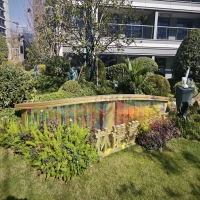Welcome to the website for landscape facilities products and knowledge.
How does the design of the trash can accommodate easy cleaning with automated systems?
The design of modern trash cans has evolved significantly to incorporate automated systems that simplify cleaning and maintenance. These innovations prioritize hygiene, efficiency, and user convenience.
1. Smooth, Non-Porous Surfaces
Many automated trash cans feature smooth, non-porous materials like stainless steel or high-grade plastics. These surfaces resist stains and odors, making them easy to wipe down or rinse. Some models even include antimicrobial coatings to further reduce bacteria buildup.
2. Hands-Free Operation
Motion sensors or foot pedals eliminate the need to touch the bin, minimizing contamination. This design reduces the spread of germs and keeps the exterior cleaner for longer periods.
3. Removable Inner Liners
Automated bins often come with detachable inner buckets or liners that can be easily removed and washed. Some advanced models include self-sealing mechanisms to contain odors and spills during disposal.
4. Self-Cleaning Mechanisms
High-end models may feature built-in cleaning systems, such as UV sterilization or water rinsing functions. These automated processes maintain hygiene between manual cleanings.
5. Optimized Shape for Accessibility
The interior design often avoids hard-to-reach corners where debris might accumulate. Rounded edges and seamless construction prevent waste from sticking to surfaces.
These design elements work together to create trash cans that require minimal effort to keep clean while maximizing sanitation benefits – a crucial feature for both home and commercial use.
Related search:

Recommendation
Metal and acrylic color-changing combined curtain wall for large-scale public landscape facilities